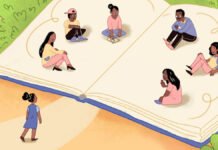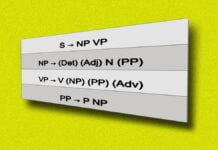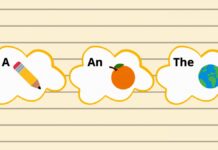In the traditional approach to teaching, most class time is spent with the professor lecturing and the students watching and listening. The students work individually on assignments, and cooperation is discouraged. In a learner-centred model, teachers get to act more as facilitators and guides. Learner-centred teaching methods shift the focus of activity from the teacher to the learners.
These methods include
- Active Learning, in which students solve problems, answer questions, formulate questions of their own, discuss, explain, debate, or brainstorm during class.
- Cooperative Learning, in which students work in teams on problems and projects under conditions that assure both positive interdependence and individual accountability.
- Inductive Teaching and Learning, in which students are first presented with challenges. Inductive methods include inquiry-based learning, case-based instruction, problem-based learning, project-based learning, discovery learning, and just-in-time teaching.
A student-centred classroom is one where learning is cooperative, collaborative, and community-oriented. Students are encouraged to direct their learning and to work with other students on research projects and assignments that are both culturally and socially relevant to them. Students become self-confident, self-directed, and proactive, preparing them to be independent problem-solvers and lifelong learners.
With personalized learning, the role of teachers also shifted from traditional teaching to facilitator of learning. The role of a teacher is to create an atmosphere that generates autonomous student learning. Teachers are creating opportunities for students to work in groups, collaborate, experiment, discuss and revise. With students at the centre of their learning, teachers are becoming more of a support person guiding their progress and learning. This has also led to more data-driven decision making.
Learner-centred teachers must
- Act as facilitators and guides.
- Provide anytime, anywhere and on-demand support.
- Embody core values that support deeper learning.
- Truly encourage students to drive their learning.
- Create real-world and authentic learning experiences.
- Leverage technology to personalize learning.
- Commit to professional and personal growth.
When learning is anytime, anywhere; so is teaching. In other words, expectations aren’t high just for students in a learner-centred model; expectations are high for teachers too. Teachers also have to make themselves available to students “anytime and anywhere.” Students and teachers are encouraged to connect on an ongoing basis–not only when there is a problem. A true commitment to high achievement for all learners requires a strong system of on-demand support and diverse opportunities for connection.
It takes staff commitment to core values to ensure that positive, learner-centred school culture is built and maintained. For students to achieve deeper learning outcomes like critical thinking, problem-solving, collaboration, communication, self-directed learning, an ‘academic mindset’, and mastery of core content, adults in the system have to develop and strengthen the same knowledge, skills and dispositions.
Learner-centred teachers leverage technology to boost access and outcomes by customizing student experiences based on powerful student data. Teachers in learner-centred environments don’t just use “technology for the sake of technology,” and teachers certainly aren’t replaced by programs and devices. Teachers in these blended learning environments are more important than ever. They use data from online programs and assessments to get a clear sense of student learning and then differentiate instruction accordingly. Teachers use student data to form intervention and enrichment groups, and for flexible grouping for dynamic small-group instruction.
Blended learning creates efficiencies that free up classroom time for collaboration, experiments, demonstrations and project-based learning. Technology also offers powerful tools for collaboration. In a learner-centred model, the ability to offer ongoing and meaningful feedback is essential. Gaining proficiency with technology and various tools also helps students develop unique skills.
Personal learning connects to the learner’s beliefs, strengths, experiences, and passions to start from where the learner is and move forward towards the desired learning goals. Learners are expected to be motivated, without opportunities to exert agency in the learning process. Agency comes from the power to act and requires learners to have the ability to make decisions and take ownership of their behaviours in the process. When challenges are presented or learners can find their own to solve, they are often more intrinsically motivated to seek answers to questions that they are genuinely interested in figuring out. It creates opportunities to build on the strengths of others and working together allows for new and better ideas to emerge. It creates opportunities for students to share their work beyond the classroom.
Connecting students with experts, peers and other learners allows for a different level of accountability and authentic feedback than one gets from simply handing something into a teacher for a grade. Feedback, by nature, will unearth some things that need to improve and is not always easy to hear. The learner-centred method creates conditions where learners feel valued and can openly share challenges to grow and improve as a critical part of the learning process. It sets goals and holds others accountable for developing skills like creative thinking, complex thinking and problem-solving communication, and innovation.
Learner-centred methods have repeatedly been shown to be superior to the traditional teacher-centred approach to instruction, a conclusion that applies whether the assessed outcome is short-term mastery, long-term retention, or depth of understanding of course material, acquisition of critical thinking or creative problem-solving skills, the formation of positive attitudes toward the subject being taught, or level of self-confidence in knowledge and skills.





























